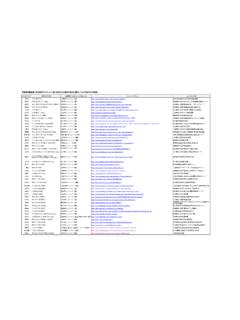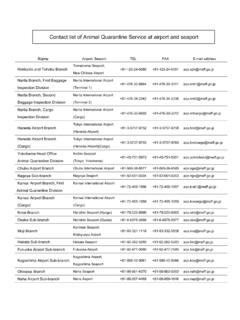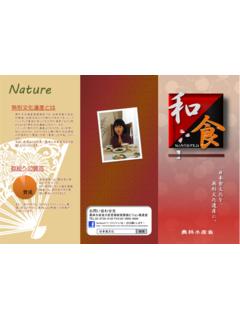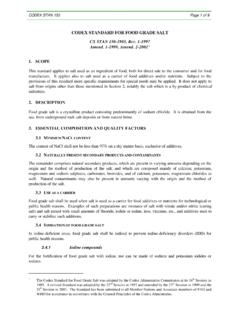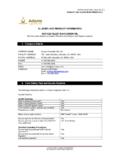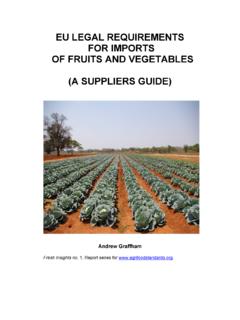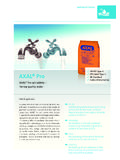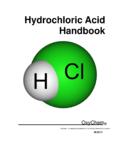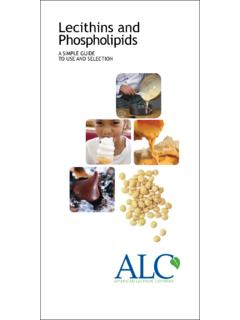Transcription of The Inspection Certification System for Organic …
1 The Inspection Certification Systemfor Organic ProductsName of registeredcertifying bodyJanuary2015 Ministry of Agriculture, Forestry and Fisheries, food Safety and Consumer Affairs Bureau- 1 -I. Establishment of inspectioncertification systemfor Organic , flooding of the labellings such as " Organic ", "reduced amountof pesticide", etc. becameahindrancetoconsumers' appropriatechoice."GuidelinesforOrganicA griculturalProductsandSpeciallyCultivate dAgricultural Products" were established in 1992, and the proper labeling hadbeentried, but Organic products were not labelledappropriately, criteria oforganic productionwere not unified and the labelingwas confused as everbecause of no legal force of the Ontheinternational front, theCodexAlimentarius Commission(JointFAO/WHOFoodStandardsProg ramme)hadstartedtodiscussfortheestablish ment oftheguidelineoforganicproducts.
2 In1999, theCodexCommission adopted the "Guidelines for the Production, Processing, Labelingand Marketing of Organically Produced Foods"(GL32-1999). the light of these circumstances, the Japanese Agricultural Standards(JASstandards)for Organic plants andorganic processedfoods were establishedand labelling of oraganic products were made to be proper in accordance withrevisionoftheLawConcerningStandardiz ationandProper LabelingofAgricultural andForestryProducts(JASLaw)in1999.(Since then, JASstandards for Organic livestock products and feeds were established.)4. The JAS standards for Organic products were laid out in compliance withthe Codex Guidelines.
3 In such other countries as United States, EU, etc. thoseorganic standards were also laid out in compliance with the Codex Guidelines.[Labeling regulations]1 With regards to Organic plants and Organic processed foods of plant origin,confusion had been seen over name labels, and since there was fears thatthiswouldbecomeagravehindrancetogene ral consumerschoice,government ordinanceswasspecifiedfor commodities for whichit isparticularly necessary to plan appropriate name , in order to fulfill Japanese Agricultural Standards for organicplants and Japanese Agricultural Standards for Organic processed foods ofplant origin.
4 Items except to which the certified operators attache OrganicJASlogos cannot be labeledas " Organic " or another designationwhichwould be confused with this(effective as of April 1, 2001).Prohibitmisleadinglabelingtoproduc tsw i t h o u tO r g a n i cJAS logosOrganic tomatoOrganicspinachOrganiccarrot- 2 -II. Inspection Certification systemfor Organic products[Organization of Inspection Certification System ]1. Registration of registered Certification bodiesThe Minister of Agriculture, Forestry and Fisheries takes applications and,conductsassessmentsbasedonthestandar dsspecifiedbyJASlaw, andregisters certifying Certification of certified operatorsThe registered certifying body accepts Certification applications fromfarmsproducingorganicplantsandproces sedfoodsmanufacturers, andawardscertification after conducting assessments based on the Technical Criteria Certification , document reviews and on-site assessments are conductedto confirm:a.
5 Fields or processing plants meet Organic production criteria( Organic JASstandards)b. Production management, and documentation of production managementare conductedappropriatelysothat productionwill Inspection of certified operatorsInordertoconfirmthat producersandmanufacturersareconductingpr oduction in accordance with Organic JAS standards after being certified by aregistered certifying body, inspections shall be conducted at least once a Grading by certified operatorsCertifiedfarms producingorganic plants andmanufacturers of processedfoods, grade the products they produce/manufacture based on the records.
6 AttachtheOrganicJASlogosthemselves and supply their products to the of Agriculture, Forestry and FisheriesApplicationRegistrationAssessme ntReport of of accreditationcertification statusRegistered certifying bodyApplicationCertificationCertificatio nApplication Assessment Production FarmManufacturerGradingGrading RetailerConsumer- 3 -III. Japanese Agricultural Standards for Organic products etc.(1)Japanese Agricultural Standards for Organic plants1. Process of enactmentThe Japanese Agricultural Standards for Organic plants were laidout incompliancewiththe"Guidelines for Production, Processing, LabelingandMarketingofOrganicallyProduce dFoods"adoptedat the1999 CodexAlimentariusCommission, andafterresolutionsbytheCouncilfortheSta ndards for Agricultural and Forestry Products, were notified by the Ministerof Agriculture, Forestry and Fisheries based on the January 2000 revised DetailsThe Japanese Agricultural Standards for Organic plants in addition to statingproduction principles for Organic agricultural products.
7 Also stipulate criteria ofproduction methods and systemof labeling of names.(a)Criteria of production methods1. Fields, Collection area2. Seeds or seedlings to be used in fields3. Manuring practice in fields4. Cultivation sites, Fungus spawn, Cultivation management in cultivationsites5. Control of noxious animals and plants in fields or cultivation sites6. General management, Management of raising seedlings7. Management concerningharvest, transportation, selection, processing,cleaning, storage, packaging and other post-harvest processes(b)Systemof labeling of namesThe labels " "(which means Organic plant in Japanese.)
8 , " "(which means organically grown plant in Japanese.), " "(whichmeansorganic inJapanese.)," "(which means Organic in Japanese.),etc. are stipulated.(General names of plants shall be filled in " .") Principles of Organic plants"Tosustainandenhancethenaturalrecy clinginagriculture,theproductivityofthef armlandderivedfromthesoilpropertiesshall begeneratedbyavoidingtheusageof thechemical syntheticfertilizer andagricultural chemicals, and the Organic agricultural products shall be producedin fields adopting such cultivation management method as reducing the loadderivedfromtheagricultural productionontheenvironment asmuchaspossible.
9 " Criteria of production methods for Organic plants1. Soil fertility shall be maintained and enhanced by compost, etc and over aperiodofat least 2years before the sowingor planting(at least 3yearsbeforethefirst harvestingofperennial plants), syntheticfertilisersandagricultural chemicals shall not be used, in Seeds or seedlings shall not be produced by recombinant DNAtechnology. Organic JAS LogoName of registeredcertifying body- 4 -(2)Japanese Agricultural Standards for Organic livestock products1. Process of enactmentThe Japanese Agricultural Standards for Organic livestockproducts werelaidout incompliancewiththe"GuidelinesforProduct ion, Processing,Labeling and Marketing of Organically Produced Foods" adopted at the 2001 Codex Alimentarius Commission, and after a resolution by the Council for theStandards for Agricultural and Forestry Products, were notified by the Ministerof Agriculture, Forestry and Fisheries in October Principles of Organic livestock productsOrganiclivestockproducts are, inprinciple.
10 Manufacturedfromorganiclivestock raised in deference to their physiological and behavioral needs, onthe basis of provision of providing feeds produced by reducing pressure on theenvironment as much as possible and the avoidance of use of veterinary drugs,to sustain and enhance the natural cyclical function of agriculture.(3)Japanese Agricultural Standards for Organic processed foods1. Process of enactmentThe Japanese Agricultural Standards for Organic processed foods were laidout with the JAS for Organic plants in 2000. Along with the establishment ofthe JASfor Organic livestock products, the JAS for Organic processed foodswere reviced to include Organic processed foods for Organic livestock productsin Principles of Organic processed foodsToproduceorganicprocessedfoodsbypro cessingmethodsutilizingphysical and biological functions, avoiding the use of chemically synthesizedfood additives and chemical agents, and by preserving the characteristics oforganicplantsandorganiclivestockproduc tsasingredientsinthemanufacturing and processing.




